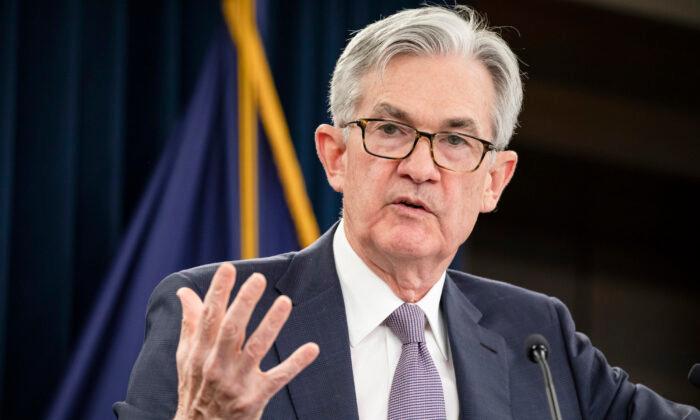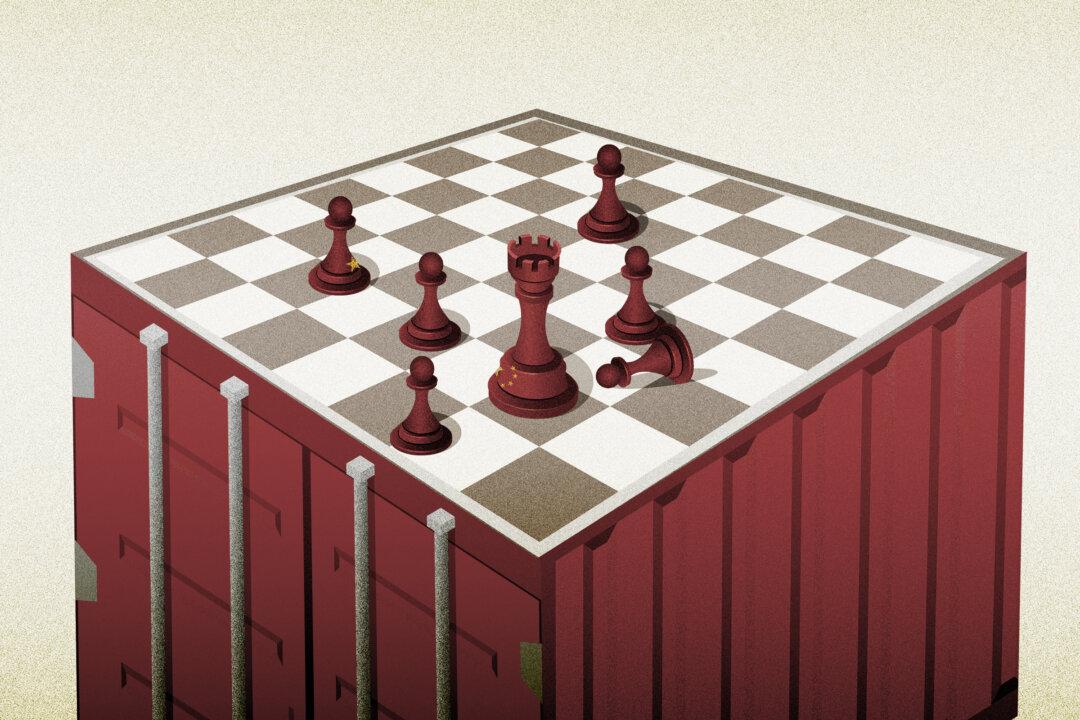WASHINGTON—The Federal Reserve announced on Sept. 16 that it will keep U.S. interest rates near zero until it sees inflation “moderately above 2 percent for some time.”
Fed policymakers don’t predict any interest rate increases through 2023.
After the conclusion of the central bank’s two-day policy meeting, Fed officials said they would hold the federal funds rate at a range of zero to 0.25 percent.
The Federal Open Market Committee (FOMC) “expects it will be appropriate to maintain this target range until labor market conditions have reached levels consistent with the Committee’s assessments of maximum employment and inflation has risen to 2 percent and is on track to moderately exceed 2 percent for some time,” the statement read.
Speaking at a post-meeting press conference, Fed Chairman Jerome Powell said the committee’s decision would provide strong support for the economy.
“We’re saying that rates will remain highly accommodative until the economy is far along in its recovery and that should be a very powerful statement supporting economic activity,” he said.
The FOMC statement took note of the pickup in economic activity and employment in recent months, while highlighting that both “remain well below their levels at the beginning of the year.”
“Weaker demand and significantly lower oil prices are holding down consumer price inflation,” the statement said.
In addition, the Fed still observes that the CCP virus poses “considerable risks” to the economic outlook over the medium term.
“The labor market has been recovering, but it’s a long way from maximum employment,” Powell said.
According to the new projections released, the committee expects the unemployment rate to continue to decline. The median projection is 7.6 percent at the end of this year, 5.5 percent next year, and 4 percent by 2023.
Meanwhile, the Fed’s inflation projection rises from 1.2 percent this year to 1.7 percent next year, and reaches 2 percent in 2023.
All 17 members of the committee expect the interest rates to stay near zero in 2021, and 13 of them projected rates to remain there at least through 2023.
At the central bank’s annual economic policy symposium in Jackson Hole, Wyoming, last month, Fed policymakers agreed on a dovish strategy to keep interest rates lower for a longer period of time.
Under the new framework, the central bank would tolerate higher inflation by adopting “a flexible form of average inflation targeting.”
Powell noted that when the economy is below maximum employment and below full demand, it tends to put downward pressure on inflation.
“Once we get closer to maximum employment, we think that inflation will come back, generally,” he said. “It’s a slow process but there is a process there. Inflation does move up over time.”
The Fed’s move affects borrowing and saving rates for consumers. If the federal funds rate is low, it becomes less expensive for banks to borrow from each other. Hence, banks can pass the lower cost of debt on to consumers in the form of lower interest rates on mortgages, auto loans, or credit cards.
Powell also said that additional fiscal stimulus might be needed to support the economy.
“The initial response from fiscal authorities was rapid, it was forceful and pretty effective, and we’re seeing the results of that,” he said.
“There are still roughly 11 million people still out of work due to the pandemic and a good part of those people were working in industries that are likely to struggle. Those people may need additional support as they try to find their way through what will be a difficult time for them.”





